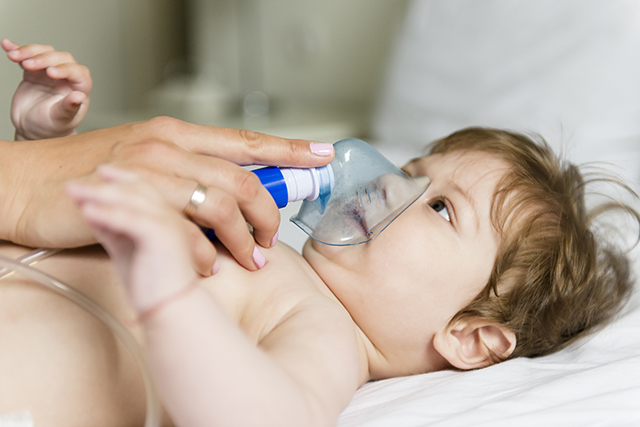
Advertisement
There are some things that – by virtue of logic – just don’t go together: Raking leaves and a windy day, for instance. Chocolate and dogs also fit the bill, and even caffeine and babies.
However, a study published in the American Journal of Physiology-Lung Cellular and Molecular Physiology could very well change our thoughts on the last assumption. In the paper, researchers found that caffeine can protect the lungs from complications that result from extended periods of oxygen therapy, including oxygen supplementation for premature babies.
One form of prolonged oxygen therapy, called long-term oxygen therapy (LTOT), is commonly used for patients with chronic hypoxemia, or low oxygen levels in the bloodstream. In these cases, LTOT is a lifelong procedure: On average, a person with chronic hypoxemia is treated for 15 hours daily, including night time when arterial hypoxemia is worse during sleep. Some conditions that result in chronic hypoxemia include chronic obstructive pulmonary disease (COPD), interstitial lung disease, cystic fibrosis, and chronic heart failure, to name a few. (Related: Standard procedure for heart attack found to be ineffective: Recent study finds oxygen therapy does NOT improve survival.)
Effects of long-term oxygen therapy in infants
Prolonged oxygen therapy is a common procedure for preterm (premature) and term (neonate) infants. However, a discrete study in the journal Seminars in Fetal and Neonatal, experimental models have shown that long-term exposure to oxygen results in a delay in the development of alveolar walls (called alveolar septation) and bronchopulmonary dysplasia, a chronic lung disease for children caused by long-term exposure to mechanical ventilation and prolonged oxygen exposure. Researchers noted, however, that in most cases, infants recover from these conditions without any complications.
The current study also noted that prolonged oxygen could lead to oxidative stress in the endoplasmic reticulum (ER), the organelle responsible for protein synthesis and release. When the ER is exposed to increased levels of stress, it results in inflammation and problems with the blood vessel and air sac development in the lungs. Using in vivo models, researchers from the Medical College of Wisconsin studied rat pups that were exposed to 90 percent oxygen to mimic conditions in oxygen therapy usually used in preterm infants. The rats were then grouped into two, with one group receiving caffeine injections. These were compared with a control group that was exposed to normal room air.
Caffeine increased blood vessels, reduced inflammation and oxidative stress
Based on the results, the researchers found that rats in the high-oxygen group that were not injected with caffeine had lower amounts of blood vessels present in the lungs than those in the caffeine and control groups. They also discovered that caffeine improved the blood vessel count for those in the high-oxygen group, as well as reduced the biomarkers that indicated inflammation and oxidative stress. In addition, they noted that the caffeine group developed more air sacs than those that weren’t given it. In terms of oxidative stress in the ER, researchers found that the high oxygen group without caffeine had wider ERs in the cells lining the blood vessels – a marker of increased oxidative stress.
“Our study provides a novel mechanism by which caffeine protects [the] developing lung from oxidative stress induced by hyperoxia exposure,” the researchers concluded. In particular, they said that the study was the first to demonstrate the effects of caffeine in ER stress levels, including its positive effects on cases of lung injury because of oxygen therapy.
Sources include:
Advertisements







